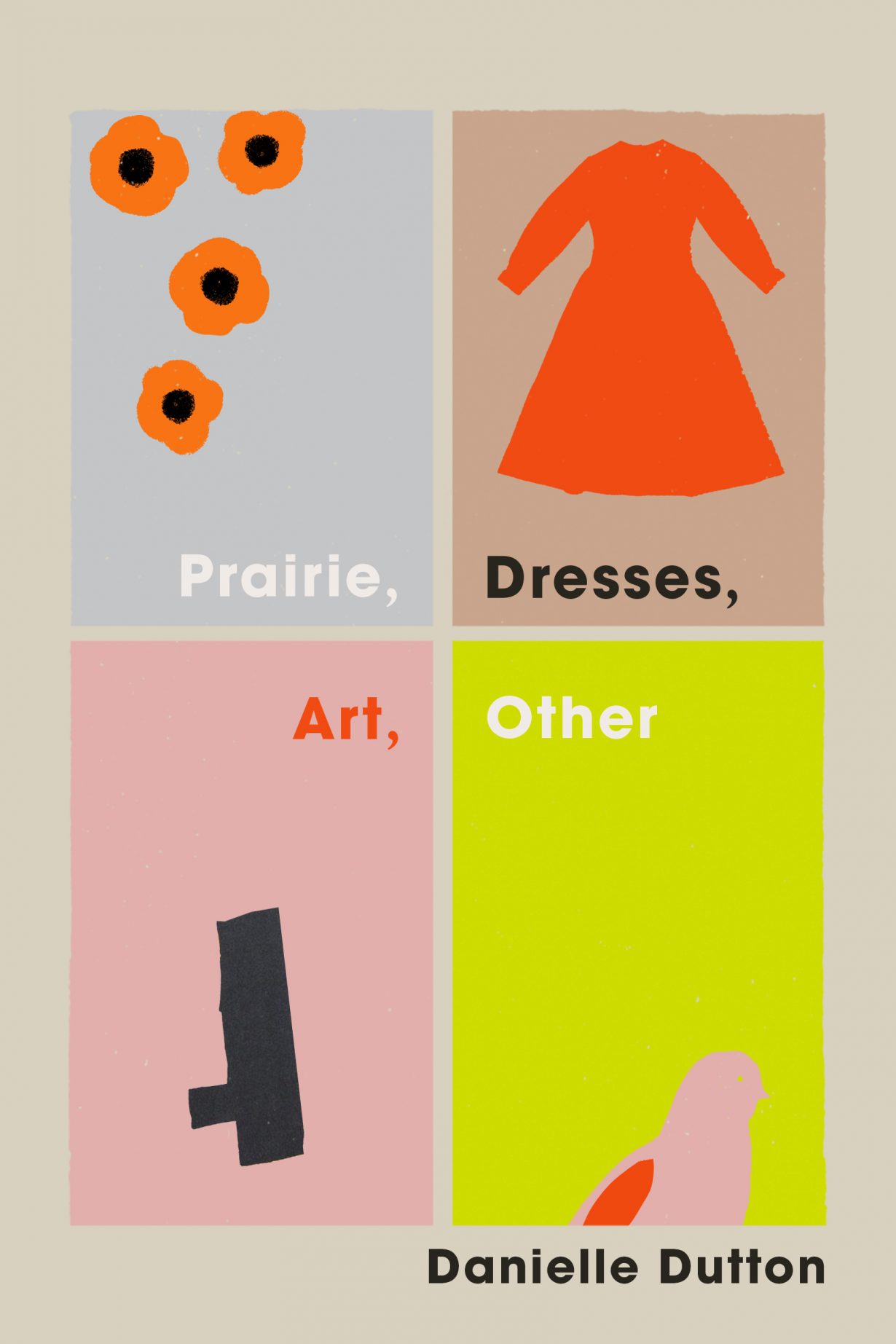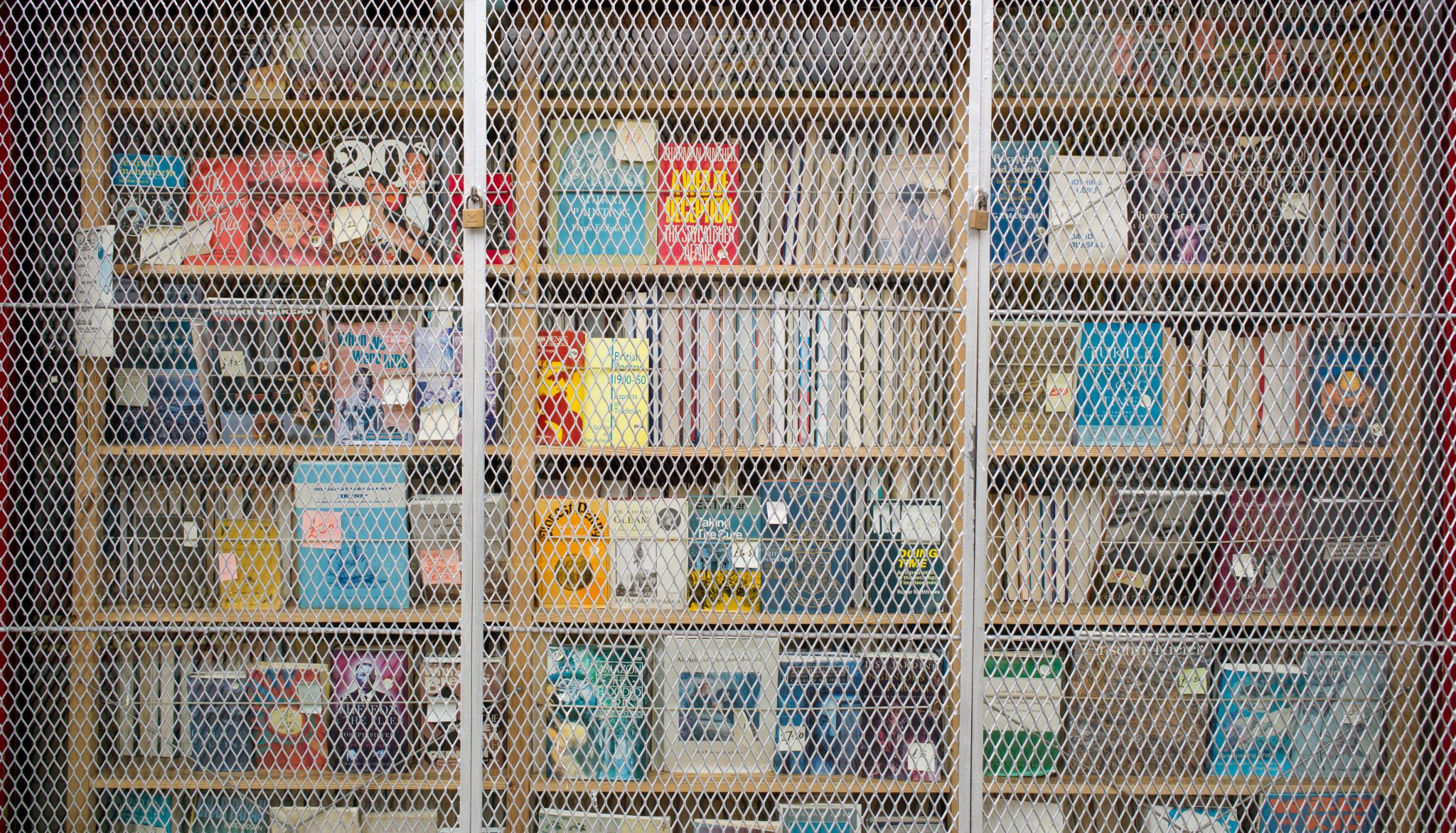Danielle Dutton’s Prairie, Dresses, Art, Other attempts to galvanize literary art’s sense of perpetual death. What new forms can she offer?
Literary art is perpetually dying. Somebody pops up every now and then with a preemptive obituary: the novel is dead; the author is dead; poetry is a conservatory art (so, dead); big corporate publishing is dead, and so is independent publishing; Barnes & Noble is dying, and so is the independent bookstore. But in the centuries between the printing press and the social internet, technology had largely spared writing the same existential crisis as painting after photography.
When computer programming first appeared, it allowed experimenters like John Cage and Jackson Mac Low to perform random and Oulipian mutations of text. But with ‘the rise of the Web’, poet and conceptual artist Kenneth Goldsmith wrote in Uncreative Writing (2011), ‘writing has met its photography’. Since Goldsmith argued this, the situation has become even more stark: generative artificial intelligence like ChatGPT has become widely available. Writers now desperately need new forms, and maybe even new genres.
In Danielle Dutton’s latest book, Prairie, Dresses, Art, Other, this generic urgency finds frenzied enactment. The book’s four sections play with different genres: stories, collage, essays, plays, lyricism. In the final section, ‘Other’, appears a story in script form titled ‘Pool of Tears (A Play in One Act)’. Most of the characters are nonhuman animals who do not speak, but one, named Alice, muses on storytelling and language, referencing Indian writer Amitav Ghosh and Russian literary critic Viktor Shklovsky’s ideas on recognition and estrangement, before arriving at Mikhail Bakhtin’s theory of the novel, which he described as: ‘the only genre born of this new world and in total affinity with it’. Alice thinks this idea is a little dated:
‘Of course he wrote that way back in 1941 and meant the new world then, the one around him, post Industrial Revolution, post atomic theory, and not the new world now, around me, with all its newer newness, among which the New Avocado. I suppose this means we’d need a newer new genre now? One of Bakhtin’s contemporaries said that a book is a machine for thinking. So what kind of machine do we need?’
This reads like the beginning of a manifesto for a fresh understanding of literary possibilities and play. So, then, what kind of newer new genre do we need? What kind of machine? Dutton, a writer of both fiction and criticism, argues for a combination of surrealist fiction, ekphrastic writing, collage, formal eclecticism and dreamscape. But what is new here? What do we find that directly confronts our condition now?

‘Prairie’, the opening section of the book, comprises a story cycle one could reasonably expect to be ekphrastic (one is titled ‘Installation’), in which the narrator and her family traverse the American Midwest. The narrator relays everything from details about black holes, via her curious son; to road signs advertising American Evangelicalism with typically bizarre phrases like ‘JESUS RECYCLED HUMANS’; to names of wildflowers, trees, birds and other animals, which regularly interrupt the text: ‘Glade coneflower. Rough blazing star… [E]merald dragonfly… Sky blue aster. Sideoats grama. Little bluestem. Flowering spurge.’
These stories are by turns delightful and haunting. Dutton’s prose has a lush descriptive density, and our common ecological disaster is repeatedly expressed in the narrator’s intense focus on heat, her repeating of species names and the irony in her son’s wish for endless summer. But surrealism is a century old, ekphrasis much older than that, and for several decades environmental decline has been the de facto theme of much fiction. While Dutton’s work here is graceful and evocative, it does not strike me as new. Rather, it seems that this is a book that celebrates, and mimics, writers Dutton already counts as influences.
In ‘Dresses’, the most formally adventurous section of the book, we move from narrative to collage. Comprising 65 numbered quotations, followed by 65 numbered citations, it is not so much written as composed, each fragment linked by the theme of the dress. It’s a fun reading experience – reminiscent of Walter Abish’s 99: The New Meaning (1990) or David Shields’s Reality Hunger (2010) – composed from both classical and contemporary material. Ovid, Cervantes, Tolstoy, Austen and Flaubert join with Carrington, Duras, Hurston and Waldrop. Language collides: ‘…And her amber ear-rings; they were like little dangling nuts’ (Katherine Mansfield) meets ‘after Mother / died her red / dress continued / baking pies’ (CAConrad).
As much as I enjoyed ‘Dresses’, it seemed out of place between the straightforward narrative prose of ‘Prairie’, the essayistic ‘Art’ – in which Dutton makes an apology for ekphrastic writing – and the mélange of narrative prose genres that appear in ‘Other’. If she channelled Clarice Lispector and Virginia Woolf in her stream-of-consciousness novel SPRAWL (2010), and Jeanette Winterson in her funny, sensitive and deeply felt fictionalisation of Margaret Cavendish in Margaret the First (2016), who are Dutton’s models for this project? Are they Ghosh, Shklovsky and Bakhtin? Is it Ludwig Wittgenstein, from whom Dutton draws ‘A Picture Held Us Captive’ as the title of the essay that comprises ‘Art’? How about Lydia Davis, Jean Rhys, Bhanu Kapil, Marguerite Duras, who are all referenced here? All of the above? Because this book tries to do everything and sound like everyone, it does not form a conceptual whole.
Although it is not interested in cohering, Prairie, Dresses, Art, Other also doesn’t destabilise, and takes few risks to either push the boundaries of Dutton’s chosen forms or break from her influences. As a result, it occupies a middle ground – partly of the last century, partly of this one; partly modernist, partly whatever it is we’re doing now – somewhere between the dreamscapes of Leonora Carrington and the sharp, direct realism of Joy Williams. Even pop stars like Beyoncé are dealing explicitly with genre (most recently, country) in their work, so it is no longer a radical gesture simply to question rigid genre boundaries. What kind of machine is this? And does the kind of thinking it represents reflect our ‘newer newness’? Our minds are collages now, constantly plastered over with various forms of text and image, attention hopping from one fragment to the next. In this sense, Prairie, Dresses, Art, Other resonates in its genre fluidity, but it falls just short of Dutton’s lofty ambitions by failing to articulate new forms of its own.
